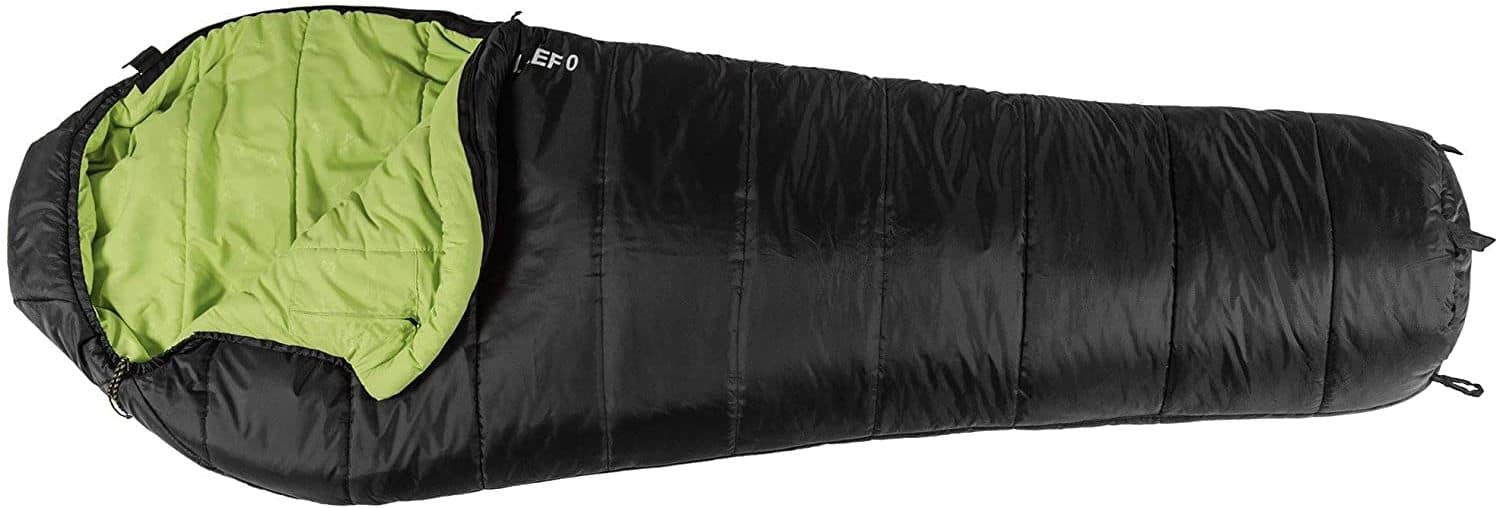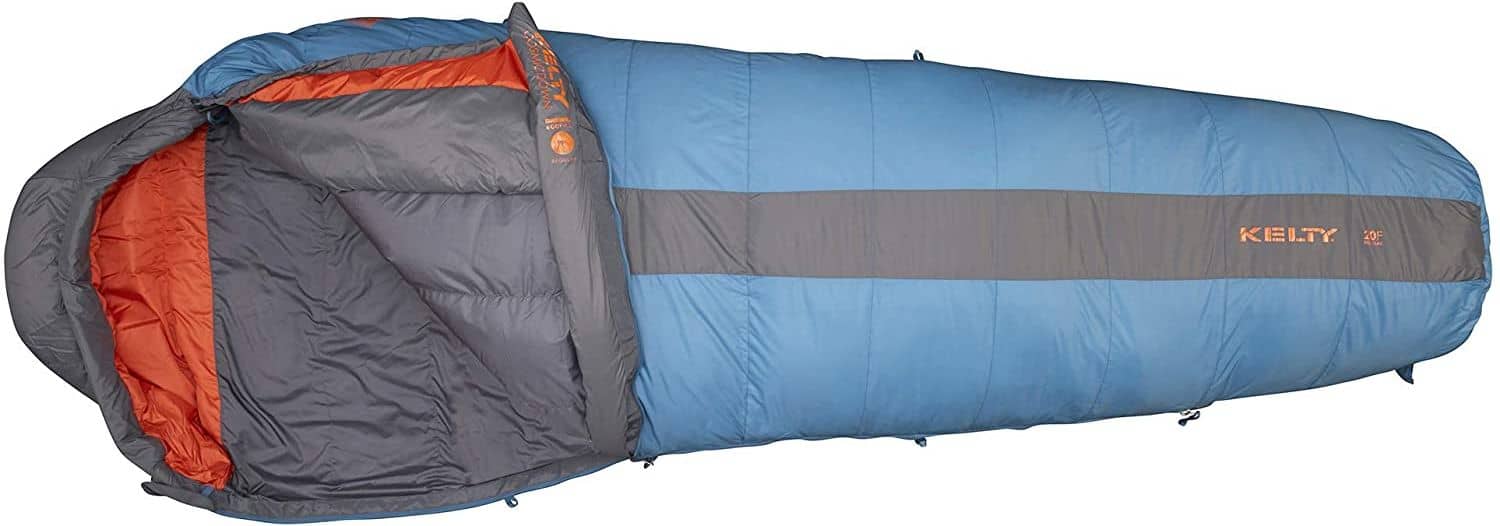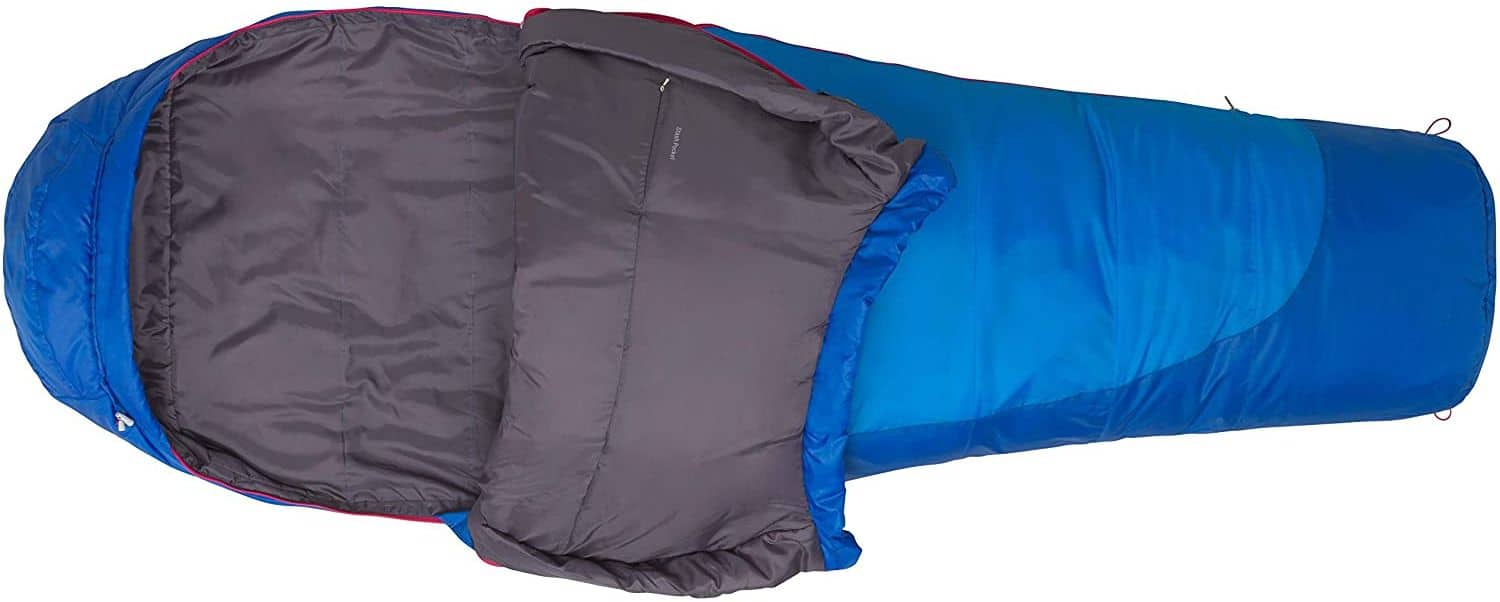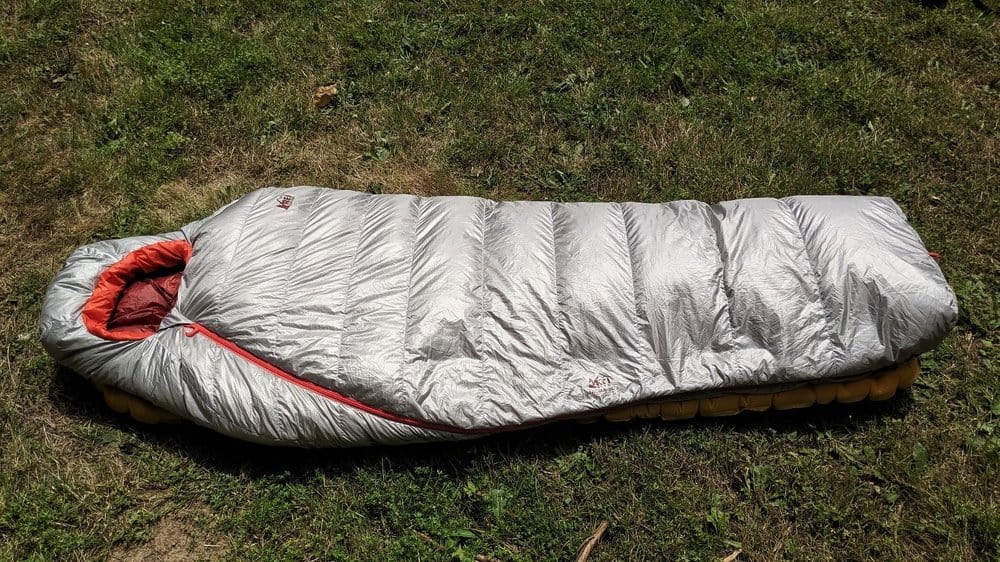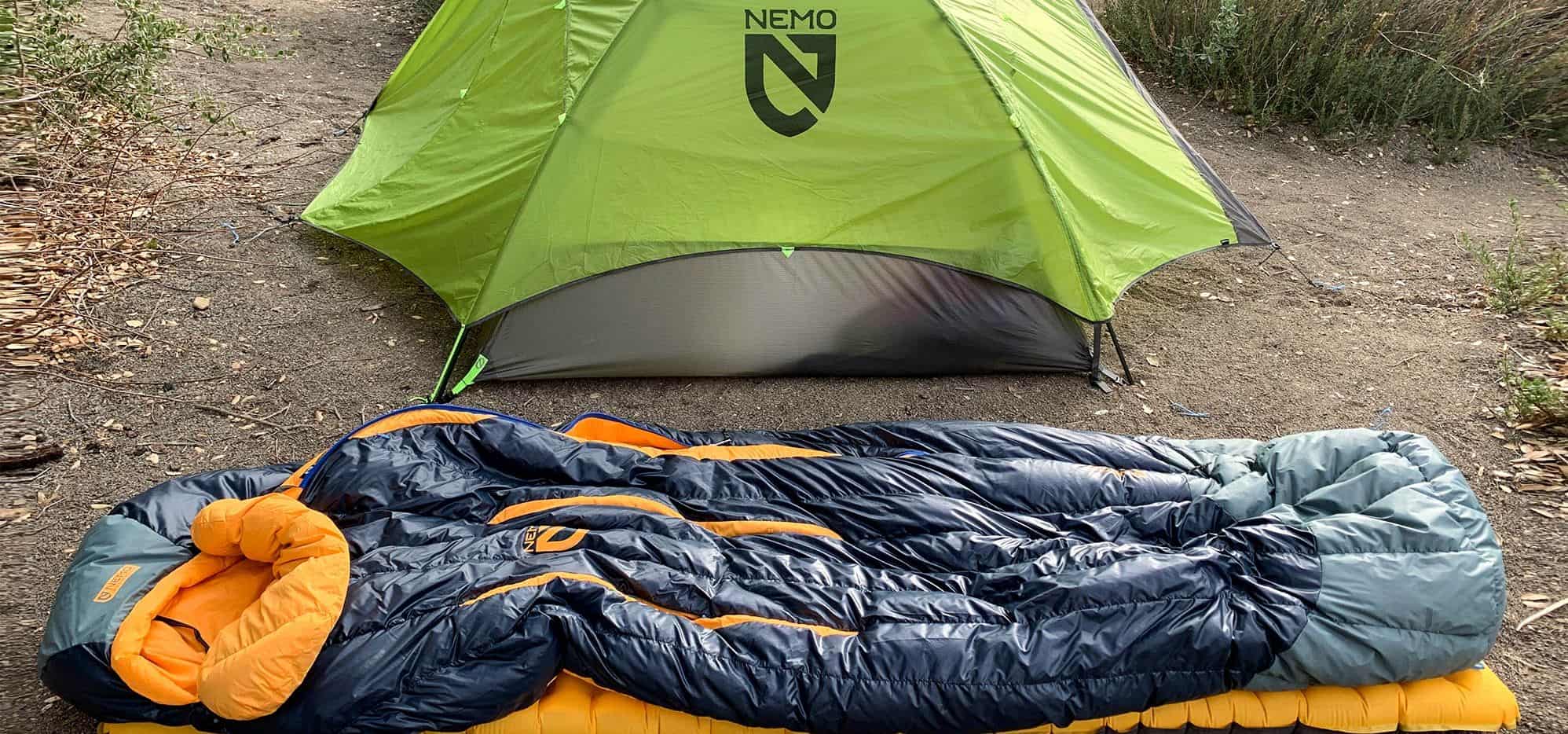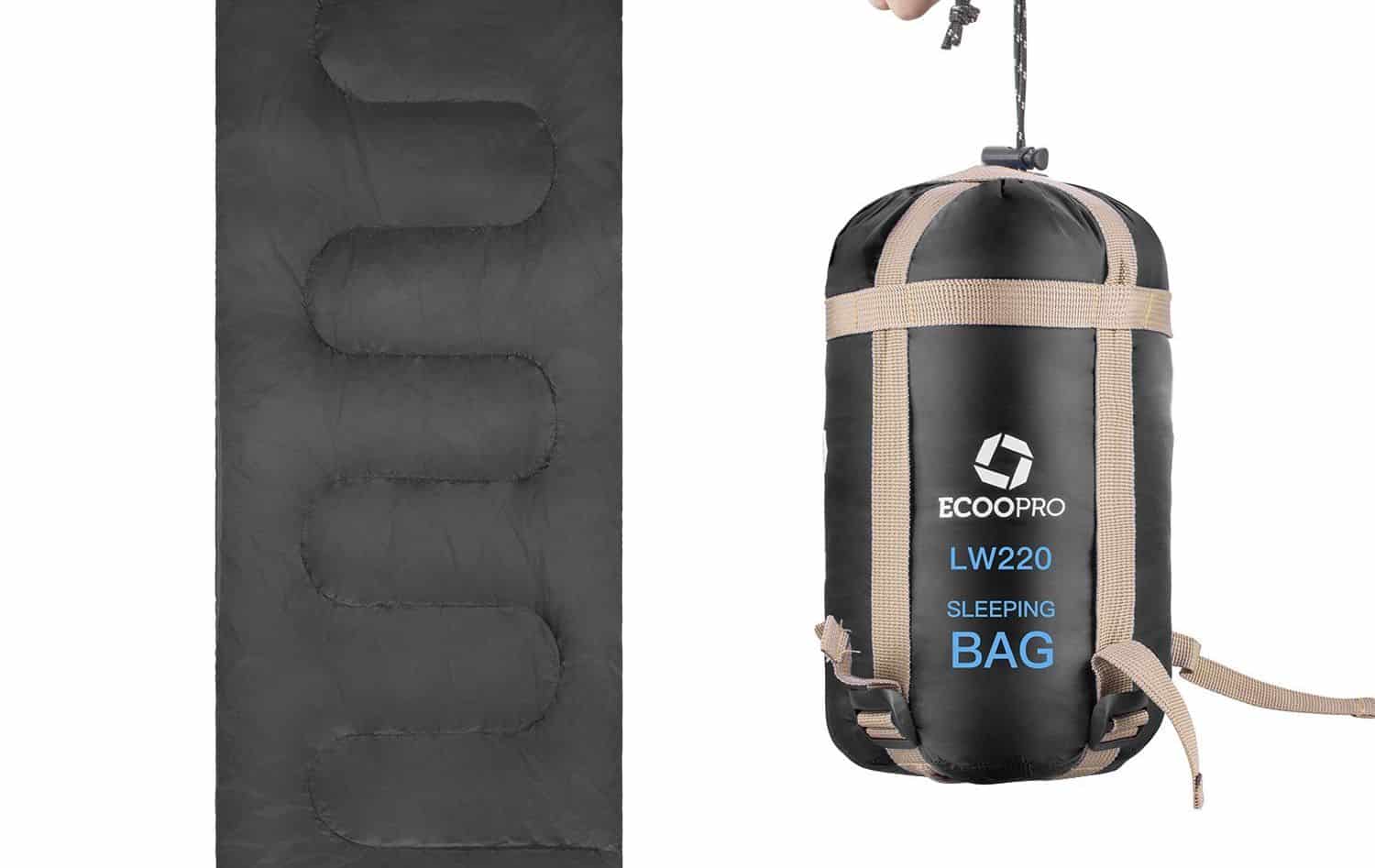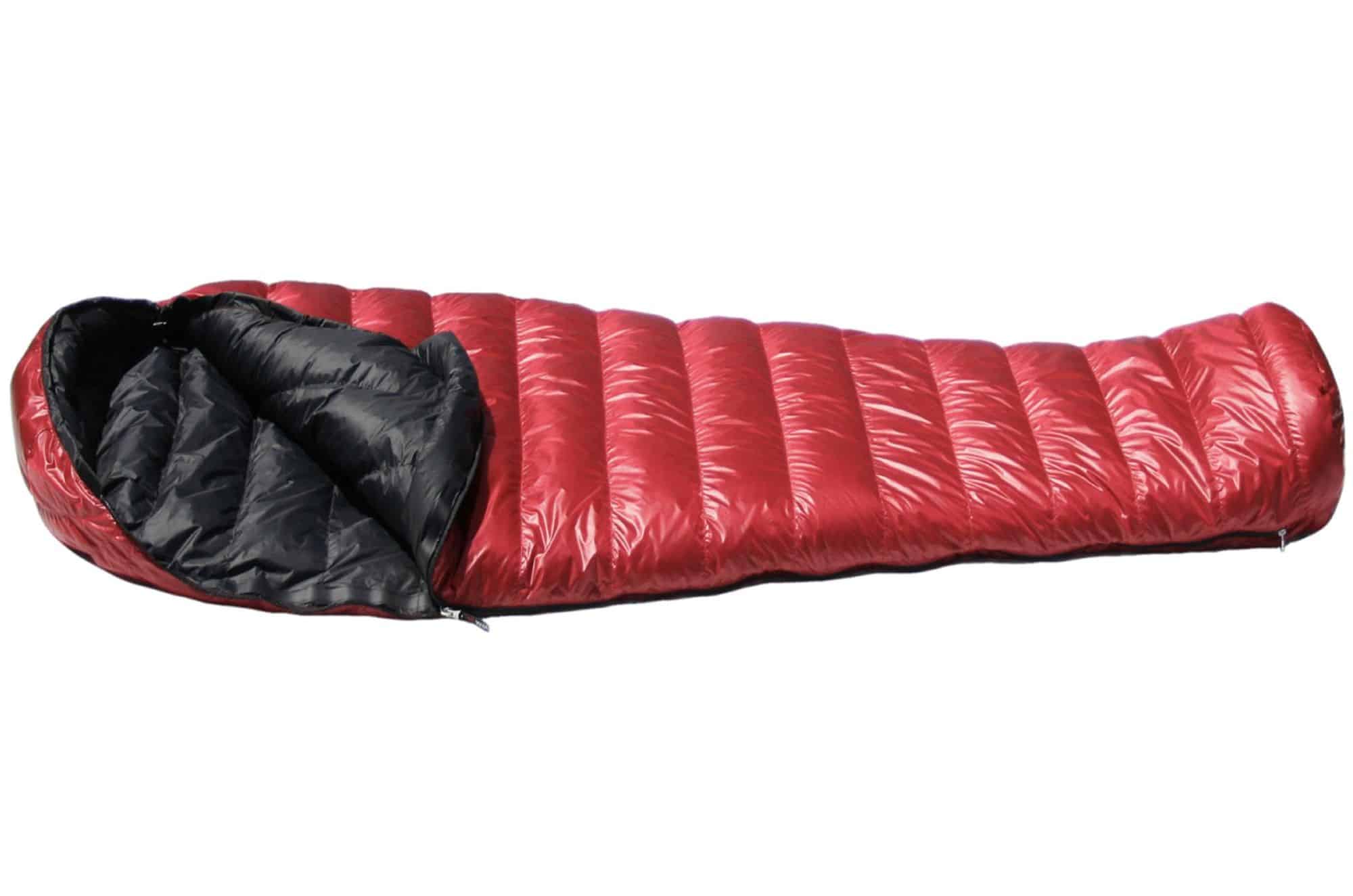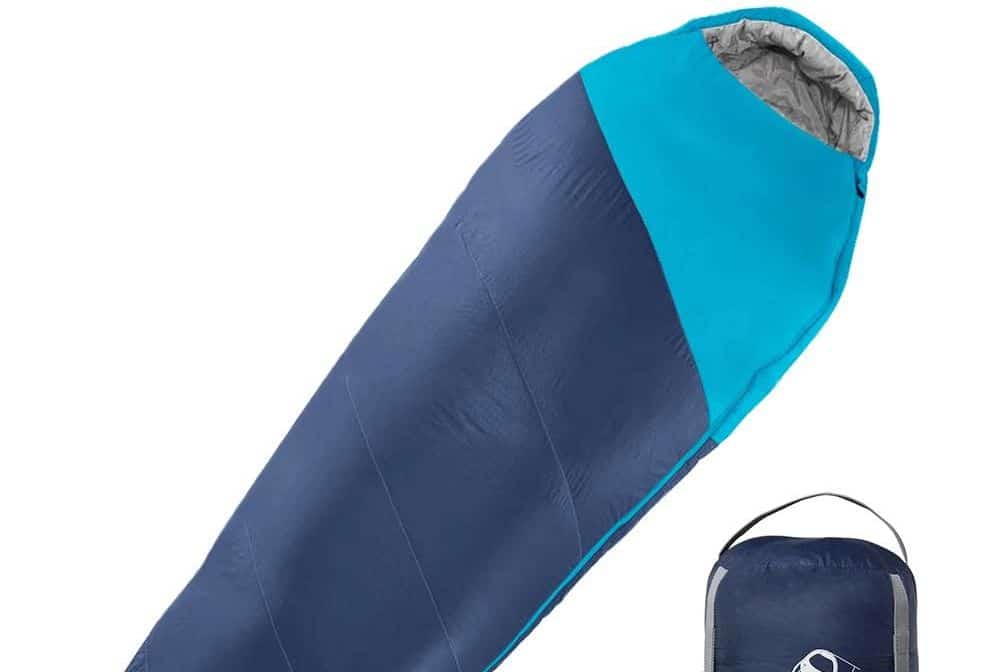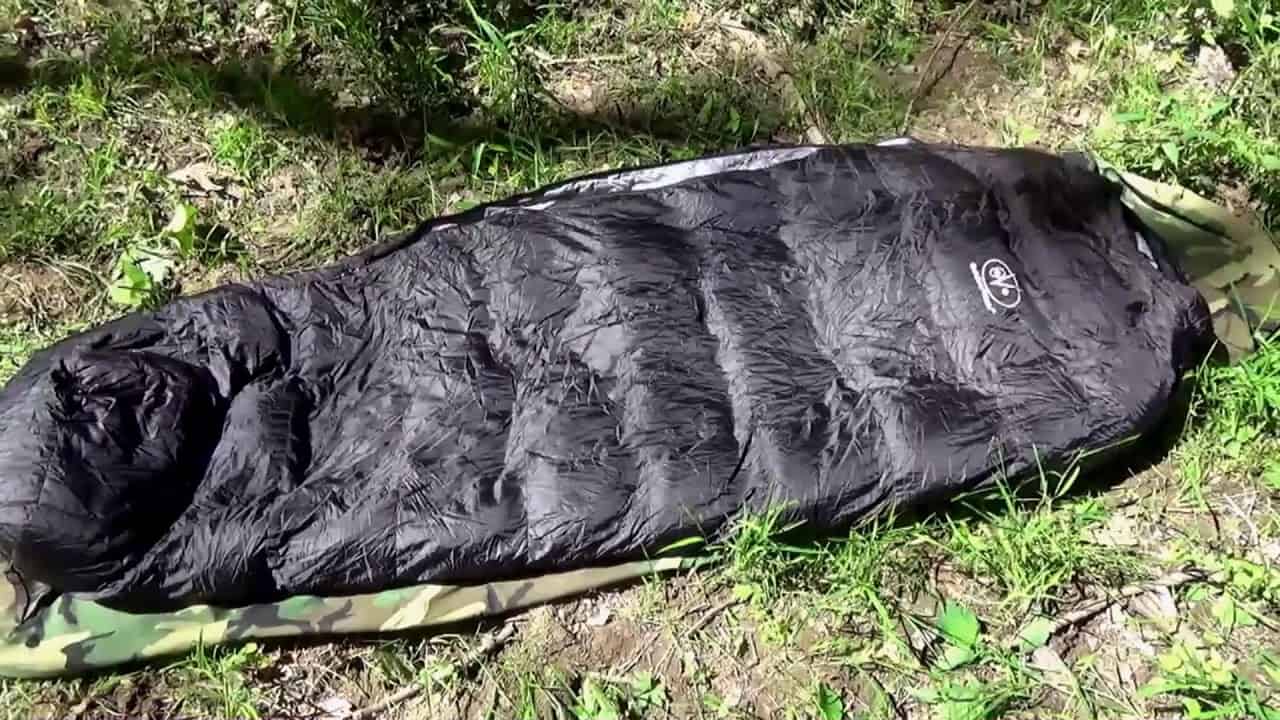While a portable Sleep Number mattress isn’t an option (yet), a best sleeping pad offered by an outdoor specialty manufacturers can ensure a sound night’s rest on the trail without needing to count sheep. Don’t make the mistake of packing the wrong sleeping pad for your next wilderness adventure – Nothing blows harder than hiking fifteen miles, setting up camp, and laying down only to discover your pad isn’t going to cut it. Follow our guide below for a little help picking out the perfect sleeping pad for your next excursion. And, don’t forget to pair your sleeping pad with one of our best sleeping bags.
For those in a hurry, our #1 top pick and Editor’s Choice for the best sleeping pad is the Therm-a-Rest Z Lite Sol ($35-45). Its unique dimple design makes it a comfortable choice, it’s lightweight, and its level of insulation exceeds expectations for a pad that weighs only fourteen ounces and costs under $50 USD.
Best Sleeping Pad
![Best Sleeping Pad in [year] 2 Therm-a-Rest Z Lite Sol](https://www.gadgetreview.dev/wp-content/uploads/2017/01/Therm-a-Rest-Z-Lite-Sol.jpg) | ![Best Sleeping Pad in [year] 3 REI AirRail 1.5](https://www.gadgetreview.dev/wp-content/uploads/2017/01/REI-AirRail-1.5.jpg) | ![Best Sleeping Pad in [year] 4 Exped SynMat Hyperlite](https://www.gadgetreview.dev/wp-content/uploads/2017/01/Exped-SynMat-Hyperlite.jpg) | ![Best Sleeping Pad in [year] 5 Klymit Static V2](https://www.gadgetreview.dev/wp-content/uploads/2017/01/Klymit-Static-V2.jpg) | ![Best Sleeping Pad in [year] 6 Therm-a-Rest NeoAir XLite](https://www.gadgetreview.dev/wp-content/uploads/2017/01/Therm-a-Rest-NeoAir-XLite-Sleeping-Pad.jpg) | |
|---|---|---|---|---|---|
| Therm-a-Rest Z Lite Sol | REI AirRail 1.5 | Exped SynMat Hyperlite | Klymit Static V2 | Therm-a-Rest NeoAir XLite | |
| Rank | #1 – Editor’s Choice/Best Backpacking Sleeping Pad | #2 – Best Self-Inflating Sleeping Pad | #3 – Best Ultralight Sleeping Pad | #4 – Best Camping Sleeping Pad | #5 – Best Sleeping Pad for Side Sleepers |
| Consumer Rating | |||||
| Weight | 14 oz | 26 oz | 14.6 oz | 16.3 oz | 16 oz |
| R-Value | 2.6 | 4.2 | 3.3 | 1.3 | 3.2 |
| Price | $44 | $90 | 134 | $60 | $160 |
| Buy Now | Buy Now | Buy Now | Buy Now | Buy Now |
How We Choose the Best Sleeping Pad
Like any other gear, sleeping pads should be carefully selected based on your unique hiking and/or camping conditions. Each of our top picks have been selected for application-specific properties. If you’re planning on camping overnight in extreme winter conditions, a pad’s R-value (its thermal resistance rating), should be a primary performance indicator that you consider. On the other hand, if you’re camping on the beach in July, comfort and cost may be the only two aspects you’re interested in. We weighed these properties in each top category below, with the most significant taking priority.
Some designs compliment human anatomy more so than others. Things like a tapered cut, side baffle inclusion, air compartment distribution, and foam cell construction all play in how well a sleeping pad supports someone while they sleep. Design elements like these also function to extend the usable life of pads through careful consideration of functionality and potential stress via use.
Insulating materials are rated for thermal resistance using a numerical value referred to as the R-value. This is used to classify the ability of an insulating material, in this case a sleeping pad, to withstand changes to an external environment’s temperature variations. Sleeping pads with higher R-values will generally keep campers warmer than those with lower values (i.e. 2.3 is better than 1.5). Performance testing to determine an R-value is done in a controlled, 70° Fahrenheit environment without airflow across the surface of the pads being examined. Because of this testing standard, R-values should be considered carefully based on trial and error. If you’re comparing similar pads (for instance, both foam dimple designs with equivalent thicknesses), then the corresponding R-values can be used to measure relative thermal protection reliably. If, however, you’re comparing an air pad to a foam pad with similar R-values, the best way to arrive at a definitive conclusion is to use both pads in the field.
For our ultralight top pick, weight was obviously a more important factor than other design and performance aspects. Weight, as it should be, was considered based on intended application; family, overnight campers aren’t going to value a one pound weight reduction as much as ultralight, cross-country hikers.
Other comparable pads’ costs were evaluated to determine if the cost alone was enough to keep them competitive. From our study, general use pads typically cost between $20 and $40 USD. Sleeping pads with significant R-values (5, or higher) can range between $110 and $250. And true ultralight pads (weighing less than 1 lb) start around $130 USD.
There are three primary types of sleeping pads: manually-inflated, self-inflating, and closed-cell foam pads. Manually-inflating and self-inflating pads are often preferred over foam pads because foam is rigid, bulky, and firmness can’t be adjusted like it can be with an inflatable variant. Backpackers, campers, car campers, and everyone in-between that prefer a highly-compressible pad (something that can easily be stowed away in a backpack) will typically opt for an air pad. For our review, construction type was considered in relation to application just like our other sleeping pad variables. As with everything else, your unique situation should be evaluated carefully when selecting one of the best sleeping pads for your next outdoor adventure.
Note: All of our top pick prices, weights, and packed sizes reflect those for regularly-sized sleeping pads.
Why You Should Buy One of the Best Sleeping Pads
No matter what you’re planning on your next trip, it’s important that you go prepared. Even a well constructed, lofty sleeping bag isn’t going to keep you warm if you’re using it on the ground; Down fill (or synthetic) within a sleeping bag compresses when you lay on it, reducing the ability for warm air to become trapped inside. If you’re sleeping on the ground with only a sleeping bag, you’re going to lose body heat. A sleeping pad ensures that you’re insulated from the ground. It will complement your outdoor sleep system and overall help you get a better night’s sleep.
In colder temperatures, having another layer of insulation between you and the ground (or air if you’re a hammock camper) can mean the difference between life and death (in extreme cases). It’s important that you plan accordingly for the environment you’ll be spending time in. Cold weather backpacking can be a lot of fun, but if you’re unprepared you’re going to have a bad time. Be sure to consider the temperature rating when shopping for sleeping pads.
Many newer sleeping pads are engineered with higher-grade insulating materials, reflective components for radiating body heat back toward a sleeper, tougher materials which better resist sharp rocks and twigs, and often are lighter weight than older sleeping pads.
![Best Sleeping Pad in [year] 12 Best Sleeping Pad - Therm-a-Rest Z Lite Sol](data:image/gif;base64,R0lGODdhAQABAPAAAMPDwwAAACwAAAAAAQABAAACAkQBADs=)
A no-brainer for the classic adventurer
Award: Editor’s Choice/Best Backpacking Sleeping Pad
Price: $44 | Packed Size: 20 x 5 x 5.5″ | Weight: 14 oz | R-value: 2.6
WHY IT’S A BEST SLEEPING PAD TOP PICK: Super lightweight, worry free closed-cell foam construction, and a staple among outback trekkers, the Z Lite and Z Lite Sol are some of the best backpacking sleeping pads on the market.
The Therm-a-Rest brand is manufactured by Cascade Designs and is known among outdoor enthusiasts for its ultralight, trekking, travel, and camping sleeping pads. The brand’s website actually has a nice sleeping pad selection tool that steps consumers through their needs to determine the best fit for each adventure.
Ideal for backpackers, thru-hikers, and mountaineers, the Z Lite Sol is the brand’s improved design on the already great Z Lite mattress. Both are some of the lightest, compact, closed-cell sleeping pads on the market. They conveniently fold into an accordion-style shape for easy, external stowage on a pack, and the dimple design helps to retain heat from a sleepers body. The Z Lite Sol sets itself apart from the original in that it also has a reflective coating, ThermaCapture, which helps to capture radiant heat (Therm-a-Rest claims this increases overall warmth over the original model by almost 20%).
Closed-cell foam used in the construction of this pad is designed to be softer on the top and firmer on the bottom so that sleepers benefit from a surface that gives just a little more to their unique physique. Check out Therm-a-Rest’s NeoAir Xtherm sleeping pad as well, which is a lightweight, 2.5 inch thick sleeping pad. It has an R-value of 6.9, which is an impressive temperature rating well-suited for cold outdoor evenings. If you want an even thicker sleeping pad for added support, there’s the 3.5 inch Nemo Astro Sleeping Pad. Don’t forget to bring one of the best umbrellas with you while camping too. It will help you stay dry so you don’t get sick.
#2 Pick REI AirRail 1.5
![Best Sleeping Pad in [year] 13 Best Sleeping Pad - REI AirRail 1.5](https://www.gadgetreview.dev/wp-content/uploads/REI-AirRail-1.5.jpg)
Award: Best Self-Inflating Sleeping Pad
Price: $90 | Packed Size: 9 x 6.5″ | Weight: 26 oz | R-value: 4.2
WHY IT’S A BEST SLEEPING PAD TOP PICK: A self-inflating dream come true, REI’s AirRail 1.5 is the perfect sleeping pad for campers looking for a lightweight alternative in which comfort doesn’t have to be sacrificed.
REI’s AirRail 1.5 Self-Inflating Sleeping Pad offers backpackers a low-weight pad with superior comfort. It’s a hybrid design combining an insulated foam filler with internal air compartments and side baffles. The air compartment firmness can be adjusted manually by filling the pad with more air through the inlet/outlet valve. Side baffles help to insulate a sleeper’s sides while also mitigating the possibility of rolling of the pad during a night’s sleep.
Quick-closing, high-flow valves ensure that inflation and deflation takes less time than comparable pads. The pad is constructed of a durable 75-denier polyester top and bottom, all seams are welded, and the top of the pad is embossed with a nonslip surface.
All in all, REI’s AirRail 1.5 made our list as the best sleeping pad of the self-inflating variety due to its reliability and great combination of features which hikers often look for in a pad. There’s other great REI Co-op sleeping pads for every situation, such as car camping. All you need is the best disaster kit, and you’ll be ready for your next adventure.
#3 Pick Exped SynMat Hyperlite
![Best Sleeping Pad in [year] 14 Best backpacking sleeping pad - Exped SynMat Hyperlite](https://www.gadgetreview.dev/wp-content/uploads/Exped-SynMat-Hyperlite-e1486171555222-900x423-1.jpg)
Award: Best Ultralight Sleeping Pad
Price: $134 | Packed Size: 9 x 5.25″ | Weight: 14.6 oz | R-value: 3.3
WHY IT’S A BEST SLEEPING PAD TOP PICK: The Exped SynMat Hyperlite is so lightweight you’ll forget you packed it, and it can be compressed to a near pocket-sized volume.
Exped’s SynMat Hyperlite delivers comfort on the level of an at-home mattress to the outdoors and minimizes the amount of weight you’ll need while trekking in to the outback.
Unique baffles that run the length of the pad create a support structure that gives to a sleepers body contours, helping develop a comfortable surface every time – even against uneven terrain. Welded seams ensure an airtight construction and mitigate the risk of a pad failure.
A lofted, microfiber insulation is engineered in a way that allows this sleeping pad to retain heat and function flawlessly even in colder environments – this is a 4-season pad.
Exped’s “FlatValve” design facilitates high airflow in and out of the pad and reduces the probability of tearing around the valve-to-pad interface which effectively increases the expected life of this mat.
A stuff sack and tear/puncture kit are included with this mat for extra measure, comfort, and convenience.
![Best Sleeping Pad in [year] 15 Best backpacking sleeping pad - Klymit Static V2](data:image/gif;base64,R0lGODdhAQABAPAAAMPDwwAAACwAAAAAAQABAAACAkQBADs=)
A home run for comfort and compressibility
Award: Best Camping Sleeping Pad
Price: $60 | Packed Size: 8 x 3″ | Weight: 16.33 oz | R-value: 1.3
WHY IT’S A BEST SLEEPING PAD TOP PICK: Klymit hit the nail on the head with this sleeping pad. It delivers an excellent combination of comfort and compressibility for its cost.
Exceptional comfort and only one pound of weight, the Static V2 from Klymit hit the mark when it comes to performance, cost, and design. Ideal for back country hikers, campers, and even casual use, the V2 has a “body-mapped” ergonomic design on an over-sized sleeping area for maximum comfort.
Side rail cushion compartments help to cradle sleepers for a better nights sleep and added security from rolling off of the pad during the night. The segmented air compartment inside of the pad helps to reduce air movement when on the sleeping pad, and also mitigates air loss in the event of a puncture. A twist-pull valve allows for inflation in as little as ten breaths, and deflates with ease. The valve also locks closed to prevent inadvertent opening while sleeping.
30-denier polyester on the top and 75-denier polyester on the bottom help improve comfort and durability. The pad comes with a patch kit, storage bag, and is treated with an anti-microbial laminate to prevent bacterial growth in and out of the pad.
#5 Pick Therm-a-Rest NeoAir XLite Sleeping Pad
![Best Sleeping Pad in [year] 16 Best sleeping pad - Therm-a-Rest NeoAir XLite](https://www.gadgetreview.dev/wp-content/uploads/Therm-a-Rest-NeoAir-XLite-Sleeping-Pad-900x805-1.jpg)
Award: Best Sleeping Pad for Side Sleepers
Price: $160 | Packed Size: 9 x 4″ | Weight: 12 oz | R-value: 3.2
WHY IT’S A BEST SLEEPING PAD TOP PICK: Best-in-class comfort, compression, and insulation, the NeoAir XLite is a phenomenal sleeping pad for both side, back , and stomach sleepers alike.
Ideal for hikers, thru-hikers, and back country minimalists, Therm-a-Rest’s NeoAir XLite Sleeping Pad is an excellent product that delivers a high level of comfort, a solid R-value for keeping sleepers warm, and a low-weight option for those that value every ounce.
A specially made reflective layer helps to reduce heat loss and trap body heat in air pockets without adding too much bulk to the overall design. The NeoAir XLite uses advanced fabrics and a tapered design to keep the warmth-to-weight ratio as ideal as possible.
The pad can be a bit noisy, but the combination of comfort and weight at this price point is difficult to beat. The Therm-a-Rest NeoAir Uberlite sleeping pad is another convenient product to consider due to its lightweight comfort and provided pump sack. It weighs a little over 5 oz., which is ideal for those constantly on the move.
Key Sleeping Pad Factors
Trip Specific
- Picking the right pad for the job is the most important factor when navigating the hundreds of options available to consumers.
- Foam pads may not be ideal for an ultralight backpacker. Keep function in mind first and foremost.
Size
- If packability is a crucial component of your essential gear then a highly-compressible air pad may be a better choice than a foam pad.
- Consider how you’ll carry your pad, and then eliminate the ones that don’t match your criteria.
Weight
- Ultralight fanatic? Even if you aren’t, backpackers know how important pack weight is.
- Your sleeping pad is one of three main weight and volume contributors in a pack (tent/hammock, sleeping bag, sleeping pad) and should be selected carefully to ensure your gear is technically ready for its specific use.
Best Sleeping Pad Features
Self-Inflating
- Self-inflating sleeping bags have an open-cell foam layer internal to the outer polypropylene (or similar synthetic) layer. Once the air valve is opened, the foam layer expands and pulls air into the bag. Additional air can be blown into the bag to adjust the firmness of the mattress.
R-Value
- A sleeping pad’s R-value is a measure of how well a pad can resist heat conductivity. The higher the value, the better a pad’s ability to insulate you.
- R-values range from 1 (minimum insulation) all the way to 9.5 (extremely well insulated). As with all other features, consider every aspect of a pad before making a final decision.
Baffles
- Some sleeping pads have side baffles meant to keep you snugly on the pad while sleeping (they’re also quite nice in hammock tents). Other pads have integrated pillow baffles.
- From a purely functional perspective, these features do little to add value to a pad – but personal preferences vary greatly. These are options if you fancy them.
Inflation Methodology
- Valve types and air chambers vary greatly between inflating air pads. Notable features include fast-filling (or high-volume) inflation and deflation valves which allow for a fast setup, or breakdown, often only requiring a few large breaths.
- Multiple air chambers have the added benefit of ensuring a pad retains most of its air in the event of a puncture, as well as reducing heat loss via compartmentalization.
Pad Textures
- Another common feature to look for is pad texturing meant to keep sleepers more comfortable, but also helping maintain the position of the pad while moving around throughout the night. Textures vary from manufacturer to manufacturer, but are typically coarse and applied to pads with an adhesive.
- Some non-slip coatings can make re-packing your deflated pad a bit more difficult. We recommend floading up the pad in such a way so that the non-clip coating is contained within folds before rolling up and storing in a stuff sack.
Packed Size
- Dependent on your particular needs, sleeping pads are available in a wide variety of packed sizes and can accommodate even the strictest ultralight hiker.
- Typically packed size is relative to pad weight (the heavier the pad, the larger the packed size)
- Foam pads are rigid and usually need to be strapped to the outside of a pack for trekking
- Our top air pad picks all compress to a volumetric space of approximately 215 cubic inches, or about the size of an MSR camping cookset.
Mistakes to Avoid When Shopping for the Best Sleeping Pad
We really can’t emphasize just how important it is that you pick a pad designed for your intended use. Always check weather reports if you’re planning on spending any time exposed to the elements while your hiking, or camping, and ensure that your gear can collectively protect you from the lowest possible temperature. Both air pads and foam pads can effectively help to insulate you from external temps and reduce the amount of body heat lost through a night in the wild. For additional warmth, check out the Nemo Tensor Insulated sleeping pad.
If you’re packing an air mattress, ensure you’re equipped to handle a tear, or rip. Most air pads will come with an include patch kit, but if your doesn’t you can buy these online, or from a local outdoor retailer for a few bucks. Nothing sucks more than having to sleep on a cold, hard surface because you’ve accidentally puncture your bed.
Regular, short, wide, and everything in-between. Make sure you check pad measurements in relation to your individual needs. Most pads come in a variety of sizes to accommodate men and women of both the large and small variety. If you want to look further, Sea to Summit and Big Agnes are other brands that offer a variety of sleeping pads for different-sized people.
What Else You Should Think About
Having one of the best sleeping pads is just one facet of the overall equation. Another thing to consider is if you’re well-equipped when it comes to a backpacking backpack. Check out of list of the best backpacking backpacks to see how yours measures up, or to shop for one of the year’s best. Have light for the trip? Consider reading our review of the best hiking headlamps of 2019.
As with any outdoor adventure, remember to leave with what you bring in. Leave no trace, and stay safe. Hiking in the wilderness can be very rewarding and exciting, but you should take care to ensure you’re prepared for the worst each and every time. Let family and friends know where you’re going, take the right GPS unit and physical maps with you, and plan based on the environment and seasonal climate.
Our top pick and Editor’s Choice for the best backpacking sleeping pad is the Therm-a-Rest Z Lite Sol. It’s lightweight, durable, and its R-value relative to its construction properties is a good value for nearly every budget.

![Best Sleeping Pad in [year] 1 Best Sleeping Pads|Our top pick as the best sleeping pad for ultralight hikers|Our top pick as the best sleeping pad for camping|The AirRail 1.5 is our top pick for self-inflatable sleeping pads|Out top pick for the best sleeping pad for |Our top pick as the best backpacking sleeping pad on the market](https://www.gadgetreview.dev/wp-content/uploads/Best-Sleeping-Pads.jpg)


![Best Sleeping Pad in [year] 12 Best Sleeping Pad - Therm-a-Rest Z Lite Sol](https://www.gadgetreview.dev/wp-content/uploads/Therm-a-Rest-Z-Lite-Sol-900x900-1.jpg)
![Best Sleeping Pad in [year] 15 Best backpacking sleeping pad - Klymit Static V2](https://www.gadgetreview.dev/wp-content/uploads/Klymit-Static-V2-e1486171580400-900x477-1.jpg)


![Best Camping Gear [year] ([month] Reviews) 17 Best Camping Gear 2025 (December Reviews)](https://www.gadgetreview.dev/wp-content/uploads/Campingbox_21-1.jpg)
![Best Sleeping Bags in [year] ([month] Reviews) 18 Best Sleeping Bags in 2025 (December Reviews)](https://www.gadgetreview.dev/wp-content/uploads/TETON-LEEF.jpg)
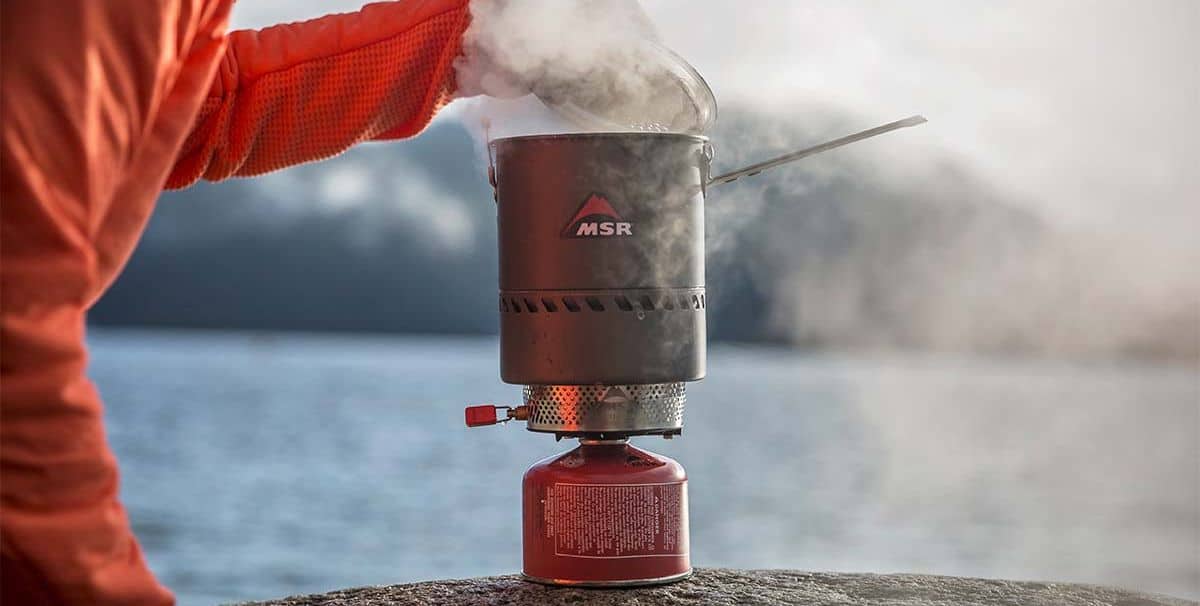
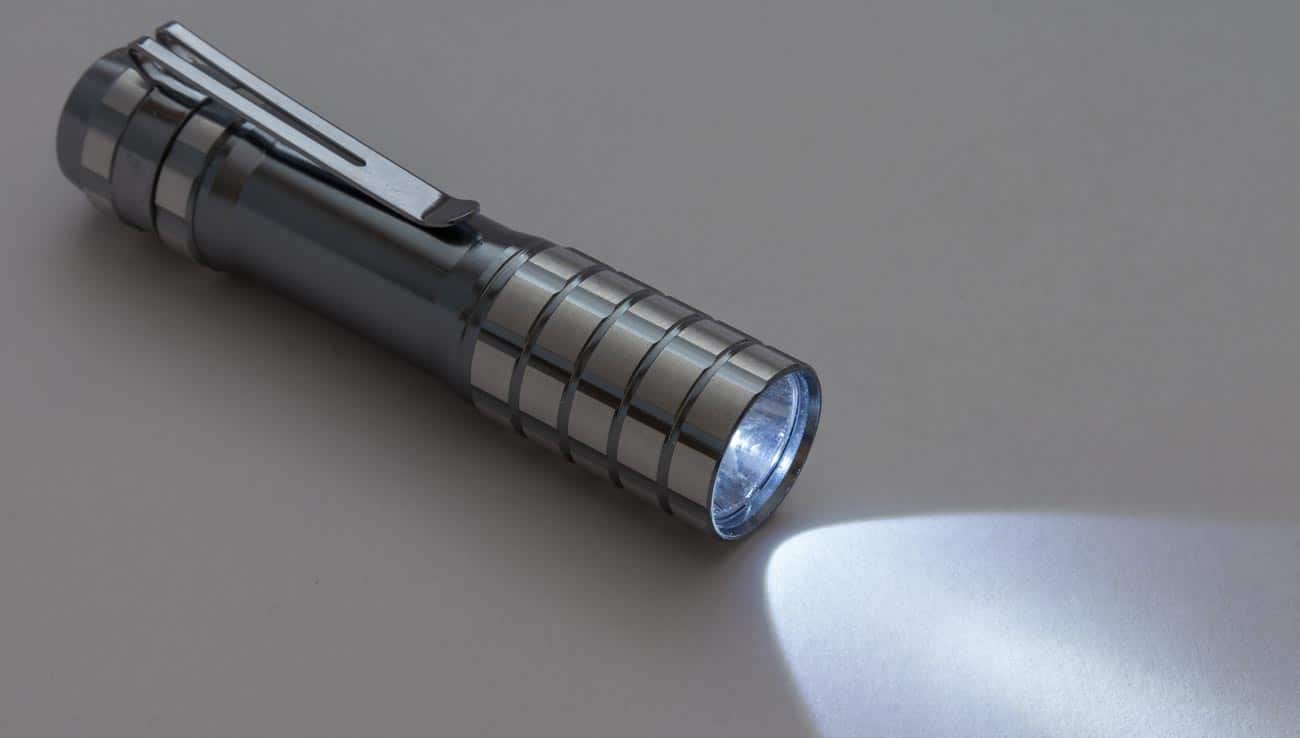
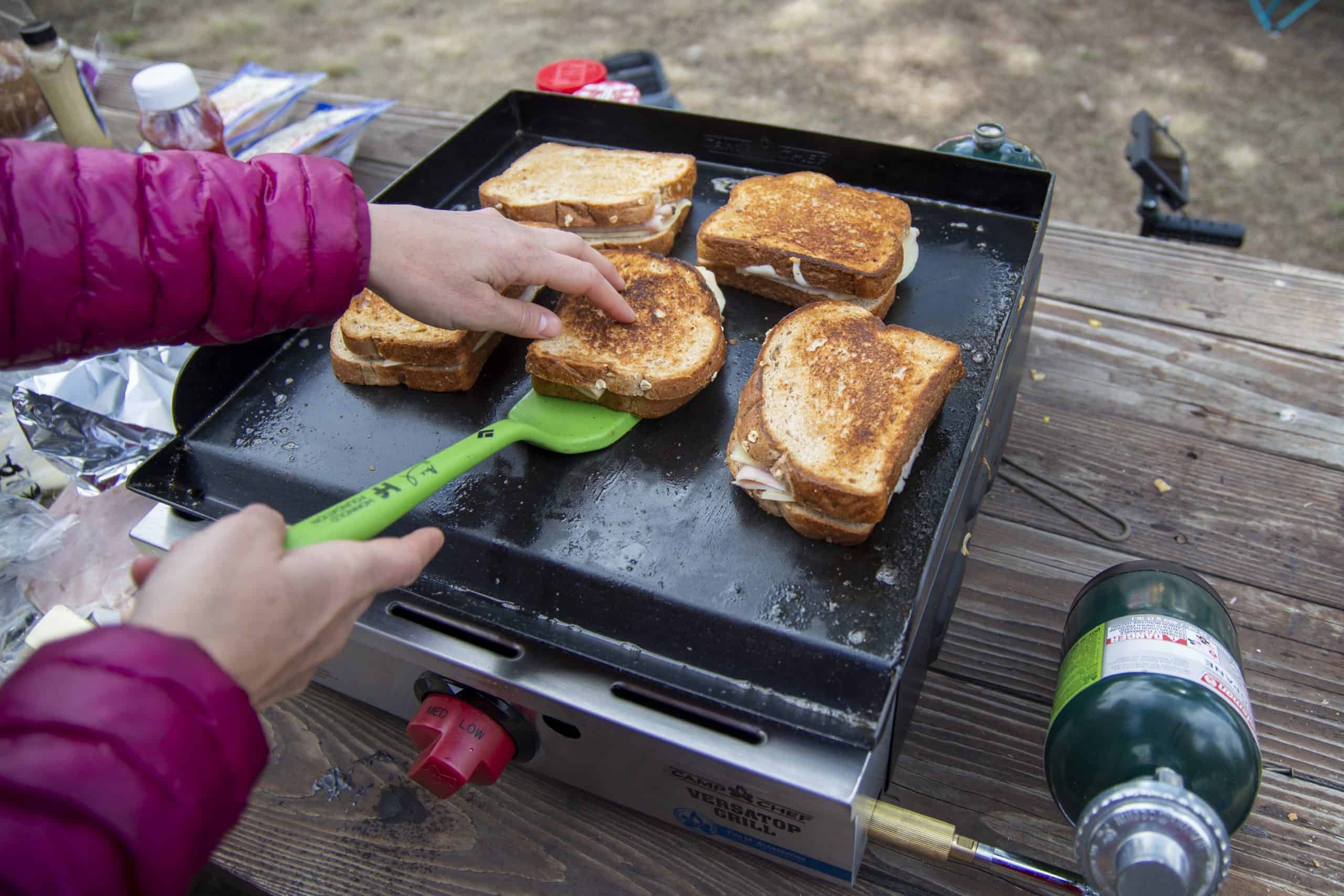
![6 Best Marshmallow Roasting Sticks in [year] 22 6 Best Marshmallow Roasting Sticks in 2025](https://www.gadgetreview.dev/wp-content/uploads/best-marshmallow-roasting-sticks.jpg)
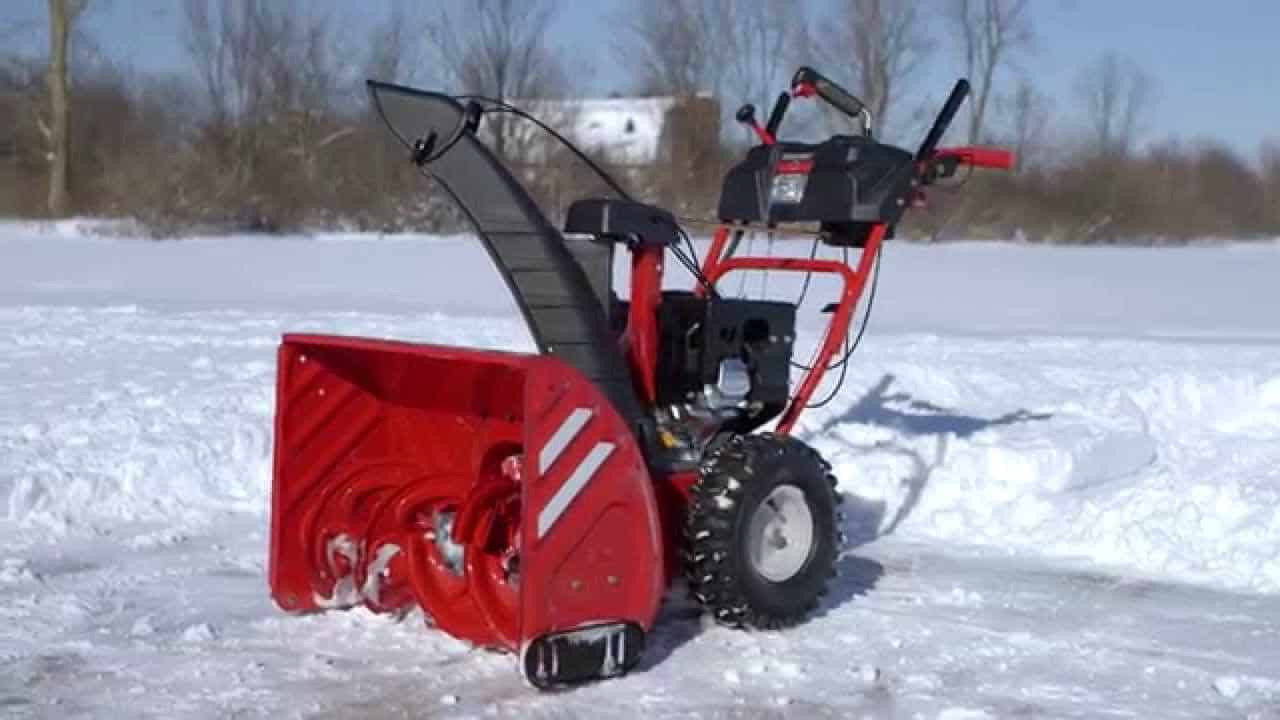
![7 Best Walkie Talkies to Stay in Contact in [year] 24 7 Best Walkie Talkies to Stay in Contact in 2025](https://www.gadgetreview.dev/wp-content/uploads/best-walkie-talkies-to-stay-in-contact.jpg)
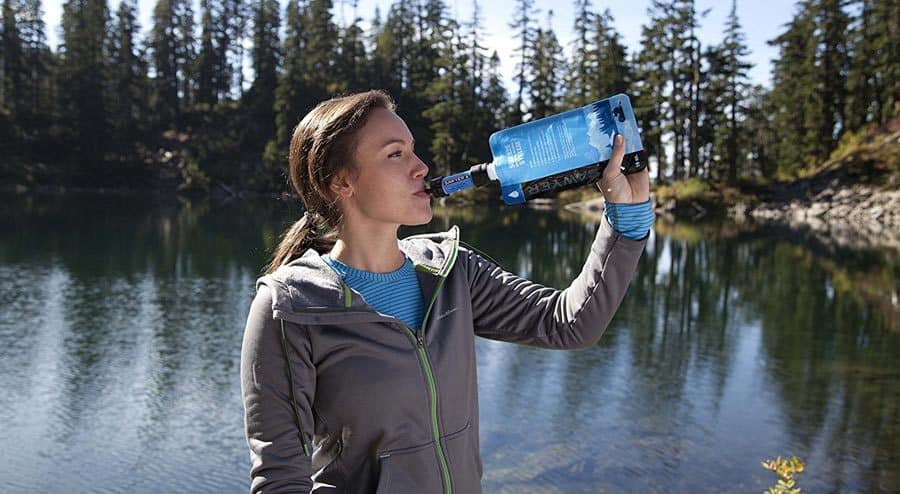
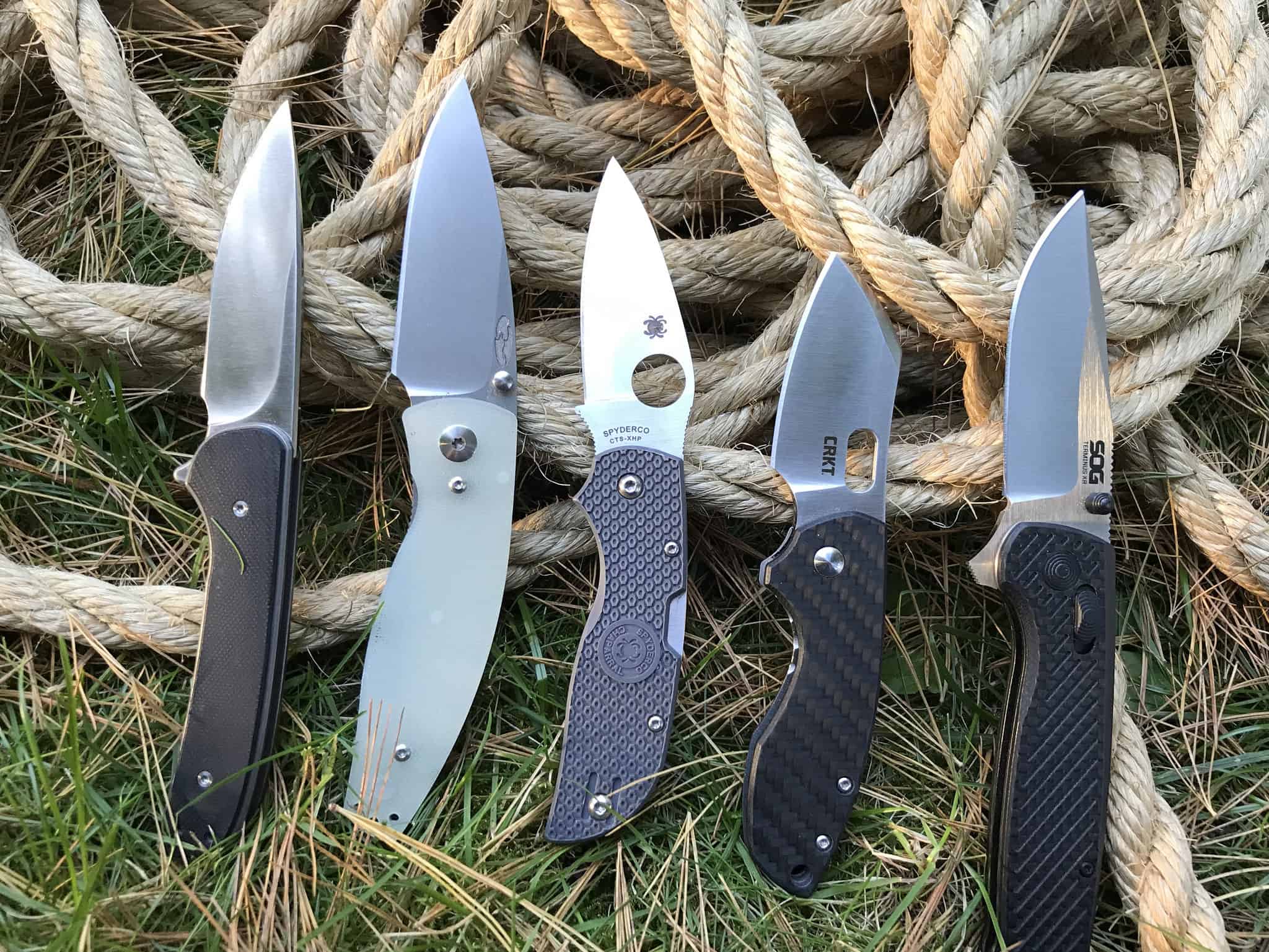
![6 Best Compasses for Hiking in [year] 27 6 Best Compasses for Hiking in 2025](https://www.gadgetreview.dev/wp-content/uploads/best-compasses-for-hiking.jpg)
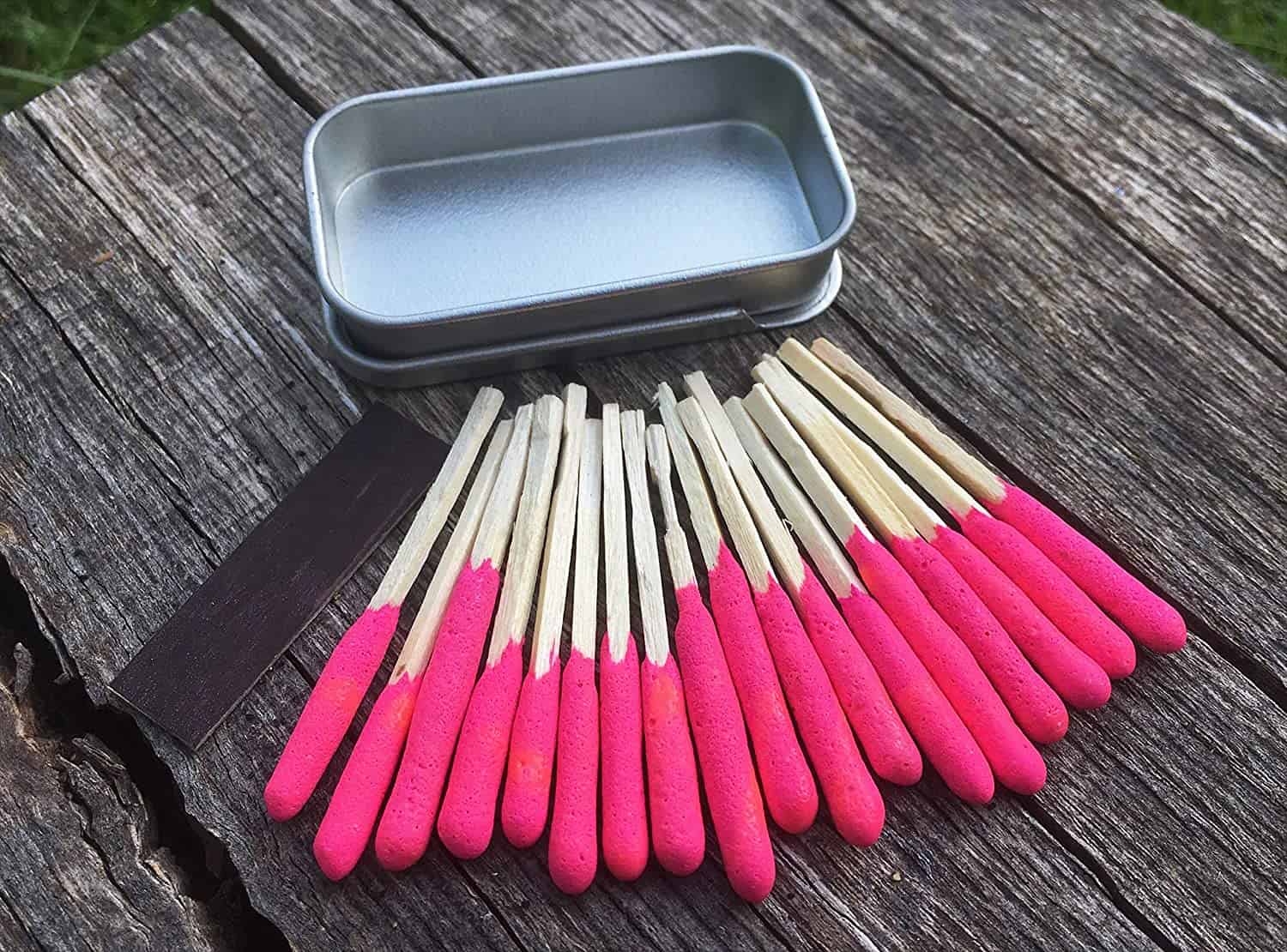
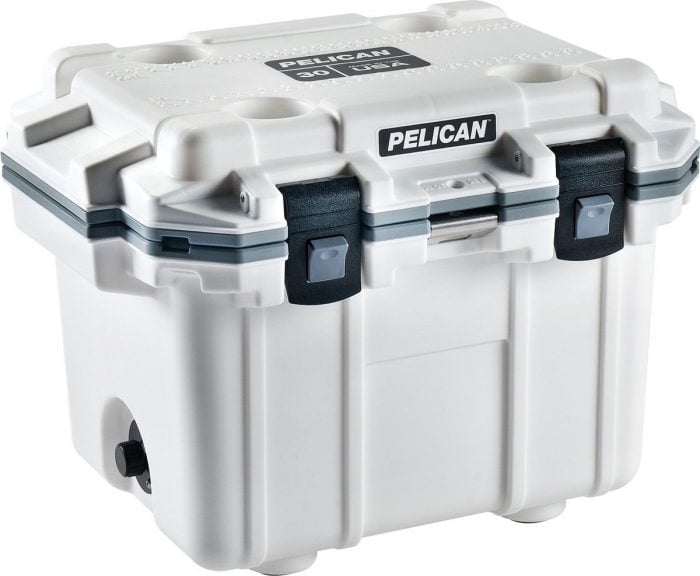
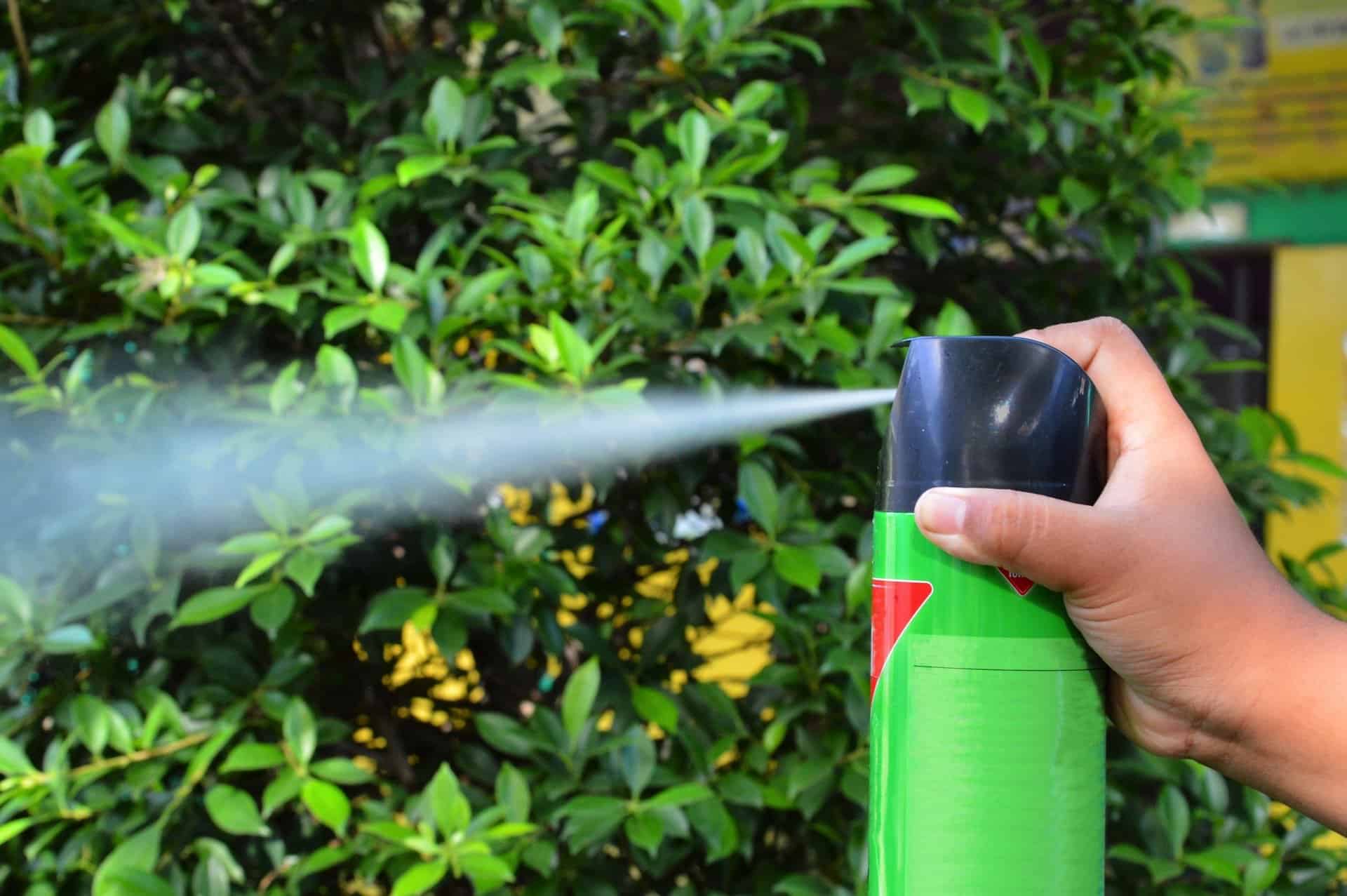
![7 Best Carabiner in [year] 31 7 Best Carabiner in 2025](https://www.gadgetreview.dev/wp-content/uploads/best-carabiners.jpg)
![Best Headlamps for [year] 32 Best Headlamps for 2025](https://www.gadgetreview.dev/wp-content/uploads/best-hiking-headlamp.jpg)
![Best Tactical Flashlight in [year] 33 Best Tactical Flashlight in 2025](https://www.gadgetreview.dev/wp-content/uploads/Lumify.jpg)
![7 Best Ropes in [year] 34 7 Best Ropes in 2025](https://www.gadgetreview.dev/wp-content/uploads/best-rope.jpg)

